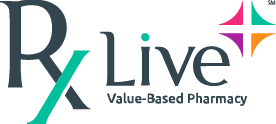When people think of the cost of diabetes, they think about its impact on the quality and length of their lives or that of their loved ones.
I’ll discuss more on related diabetes topics in upcoming blogs. But today I’m mainly focusing on the dramatic price rises of insulin and other diabetes-related medications in recent years, and how a medication consultation by a clinical pharmacist can help patients and providers alike make the most cost- and clinically effective decisions.
Insulin prices continue to spike, healthcare costs double
“Insulin is one of the many essential drugs across all categories of pharmaceuticals — brand name, specialty and generic — to experience remarkable price increases,” the American Medical Association stated in June 2018 in a federal call to action. The AMA asked the Federal Trade Commission and the Justice Department to monitor the rapid rise of insulin costs; it noted the mean price per mL of insulin has increased almost 200 percent, from $4.34 per mL in 2002 to $12.92 per mL in 2013.
Since then, prices have continued to rise, adding significant cost to individual patients — often retirees on fixed incomes — and our healthcare spend as a nation. To put it into context, expenditures for just one long-acting insulin analog, glargine, were the second-largest of all Medicare expenditures in 2015!
The CDC reports that “Each year, the costs of diabetes, its complications and associated diseases continue to rise. In addition to the tremendous toll diabetes takes on individuals and families, diabetes has a significant impact in the workplace. On average, people with diagnosed diabetes have medical expenditures more than 2 times higher than those without diabetes. And with nearly 29.1 million people — nearly 10% of the U.S. population — living with the disease, the national cost of diabetes in 2012 was more than $245 billion, up from $174 billion in 2007.
So along with cardiovascular disease, depression and anxiety, and the other health issues we’re focusing on in our RxLive blogs, treatment for diabetes must be taken extremely seriously due to its impact on our health and our budget.
How medication counseling plays a role
Clinicians work to keep abreast of the latest advances in healthcare and their potential applicability to each of their patients. But with medical knowledge doubling every 73 days by 2020 and with ever-expanding demands on the average doctor’s time, it’s easy to see how sticking with the tried-and true is appealing.
Today there are many treatment options, each with its own balance of cost and benefits. This is based on the patient’s co-morbidities, medication regimens that include drugs prescribed by multiple physicians, insurance coverage, lifestyle and realistic goals for stabilizing and improving blood sugar and longer-term A1C.
In an era of high-deductible health plans — with drugs often being assigned to a higher drug tier with higher copays, along with an uptick again in the under- or uninsured — what good are these new products if the people who need them can’t afford them?
There have been some amazing advances in newer-generation insulin-related products — including outcomes ranging from patient ease of use, some weight loss, and a feeling of fullness — which might be more effective and have greater overall value for some patients, regardless of higher costs. (More to come on this in a future blog).
There are a number of pharmacy- or manufacturer-based savings programs that can help. And, honestly, one brand of insulin generates virtually the same outcomes as another. A generic regular insulin purchased at the Walmart pharmacy is no less effective if used by its expiration date as a more expensive brand-name analog insulin bought elsewhere.
Human and analog insulins, insulin combination products and insulin alternatives range in price from $20 to $500 or more a month. That makes this a critical decision that requires some in-depth discussions that busy physicians just may not have time for. It’s the job of a clinical pharmacist consultant to do just that, assisting both the physician and patient in finding options that meet the patient’s unique situation.
RxLive case studies: Improved cost savings, adherence
$267 cut to $25 — I recently counseled a 61-year-old patient who had been newly prescribed insulin. During the consultation, he told me his prescription cost $267. He’d gone ahead and bought it but was concerned about being able to afford it long-term.
The price seemed strange to me since it was the middle of the year, when out-of-pocket deductibles typically have been met. After some investigation, I found that his Medicare Advantage Plan didn’t charge a deductible for generic medications, nor did it apply the cost or copay of these drugs to the patient’s deductible. Only when brand-name medications were dispensed was the $150 deductible applied.
Still, that didn’t total $267. On top of the deductible, he had to pay the copay for a “preferred” brand-name medication ($39/month supply in this case). Plus, all insulin pens and analog insulins were considered branded medications and triggered the deductible to be paid.
Now, you might notice that these two amounts still don’t add up: $150 + $39 = $189, not $267.
Total copay is based on the calculated days’ supply of the prescription. All new-start insulin is low-dose, but since insulin is only packaged in 10 mL or 15 mL packages, it provides 3-plus months’ worth of supply for that first prescription. Thus, the prescription was billed as a 90-day supply: $150+$39+$39+$39 = $267.
It’s easy to see why neither the patient nor the doctor was clear on why the medication was so expensive, even though it was technically “covered” and “preferred” by the plan.
In my investigation, I uncovered some other useful information — the plan did have a preferred generic 10 mL vial of regular insulin (shorter-acting) and NPH insulin (longer-acting) that could be obtained at either CVS or Walmart for a copay of $25. This prompted a discussion at the doctor’s office for implementing a standard protocol to prescribe patients the regular insulin and/or NPH insulin and then refer patients to Walmart or CVS to fill the prescription to save them such an expensive copay.
Implementing the new protocol also helped save the physician precious time; it cut down on phone calls from the patient or the pharmacy seeking a medication change. And bottom line, the patient had the option to switch to a considerably cheaper and no-less-effective alternative, achieving better adherence to his regimen and contributing to improved financial, clinical and certainly satisfaction outcomes.
Manufacturer copay cards, and an emergency backup pen —In a different case, another of our clinical pharmacists, Nicholas, recently counseled a 25-year-old female patient with a history of uncontrolled Type 1 diabetes. She was having difficulty remembering to refill her 2 insulin pens promptly, causing her to run out on occasion. She also had a concern about the price of her copay…$35 per insulin. Nicholas suggested ordering an extra refill — known as an emergency supply in prescription insurance lingo — to keep a backup on hand in case she forgets to refill her medication on time. He also found her two manufacturer copay cards that brought the cost of each insulin down to $10 per month, enabling her to more easily afford her medication, take it daily as prescribed, and ultimately improve her blood sugar levels.
Recap: How clinical pharmacists add value
The choices for diabetes medication(s) are many. And the decision must factor in the patient’s complete medication regimen across multiple doctors, patient allergies, other pertinent history and lifestyle. Pharmacists are also accustomed to working within the complex reimbursement structure of Medicare, state Medicaids, and commercial insurance plans, as well as options for discount programs.
Next blog, I’ll dive deeper into diabetes management and prevention, including first-, second- and third-line medication options; share another RxLive case study; discuss standards of medical care from the American Diabetes Association including pharmacologic approaches to glycemic treatment; and the socioeconomic data behind the rising cost and occurrence of diabetes.
***
Kristen Engelen, PharmD, is the chief pharmacy officer of RxLive and a certified consultant pharmacist, leveraging more than a decade of experience in retail pharmacy settings. She became an RxLive co-founder because of her passion for geriatric pharmacy, with a focus on the intersection of pharmacy and aging.
***
To learn more about RxLive medication counseling and pharmacogenomic testing services, contact the author at kristen@rxlive.com.




